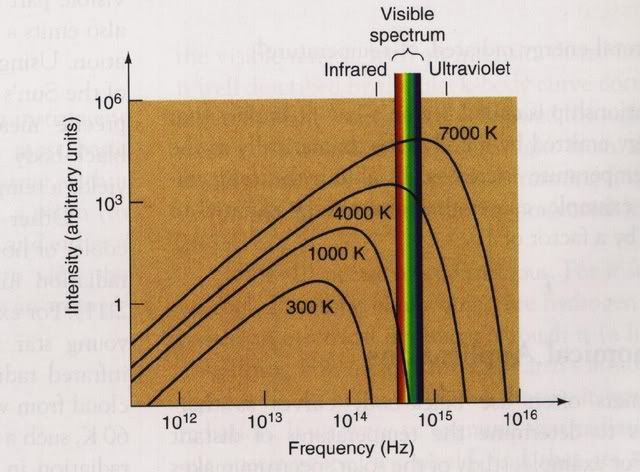I think the galactic plane should be a background feature for all star fields, but the only problem with this is that it might become very repetitive to see the same band of light in every system. While it would be realistic, the galactic plane's features won't noticeably change as we go from system to system. Leaving the galactic plane for only the solar system would be a good idea, but at the same time I know that the plane should be visible everywhere else in our stellar neighborhood. I don't know, what do you all think about having the galactic plane visible for all systems in the Freespace Universe?
As for the defining RGB values, I have them already defined in a database that I discovered when I was working on a visual astronomy simulation with a friend of mine in Spain (still a WIP). The database I collected originated from SIMBAD, which is a very good source of astronomical data. The RGB colors chosen are dependent on the temperature of the star, which of course vary within a spectral class. So basically I have a list of all of the RGB values these stars should have according to their spectral classification from O0-M9, and based on their luminosity type from type I supergiants, to VI subdwarfs (very rare luminosity type).
In the case of the actual colors of the stars, I was thinking of adding realism combined with an artistic touch. Stars are extremely close representatives of black bodies, and by assuming that the Sun is one, we can calculate the peak radiation the Sun emits based on its temperature. With a surface temperature of ~5800 K, we get ~500 nm. By knowing that the intensity of radiation is a function of the wavelength emitted, we can produce functions for typical black bodies of various temperatures.

The intensity of radiation through the visual spectrum determines what colors we see, and this makes sense. Cooler stars have peak wavelengths in the infrared region, and so the intensity of red light is higher than that of all the other colors in the visual spectrum. The opposite is true with hotter stars, as they peak in the ultraviolet region. The Sun lies in between these two extremes, and the intensity of light through the visual spectrum is roughly constant. Combining the intensities of visible light together, we end up with an emission of white light.
From time to time, I have heard stars of different spectral classes having the colors described as follows: O-blue, B-bluish-white, A-white, F-yellowish-white, G-yellow, K-orange, M-red. This is an extreme simplification and is not really accurate; however, it hints the idea that blue stars are hot and red stars are cool. This description does not take into consideration the fact that the combination of wavelengths of different intensities will not produce a pure color. Only until we get to the extremes such as a very hot star, or a very cool star, will the dominant color be blue or red, respectively.
Anyways, I thought that was just an interesting subject to talk about. What Herra Tohtori mentioned was absolutely correct (it is a very interesting experiment BTW), but I believe the reasons which were described also have to do with the idea that the Sun actually is white and not yellow as we commonly perceive. So while the true color of the stars might not be a pure orange or pure red, I think it would be fine to increase the vivacity of the color, as long as this change in vivacity is constant throughout the stellar spectrum.
In the meantime, I'm trying to learn how to use GIMP. I have never used any software like this before let alone try to create my own images in this fashion, it's interesting nevertheless. Thanks for the input.

